Pilates and yoga have many similarities. Both types of exercise are primarily performed on mats, and they both focus on improving your flexibility, balance, and posture while strengthening and toning your muscles. However, the two exercise disciplines have many differences as well, including the type of mat you should choose. We've done the research and have all the answers you need to select the perfect mat for your Pilates or yoga workout.
Pilates mats are thicker than yoga mats. The average Pilates mat is 3/8- to 1/2-inch thick, but some are as much as 1-inch thick. The average yoga mat is 1/8 to 1/4-inch thick. Also, yoga mats usually have a grippier texture while Pilates mats tend to have a smoother texture.
Keep reading for more tips on choosing the best mat for either Pilates or yoga. We'll tell you how to select the right size mat, why Pilates and yoga mats are different, whether you can use a yoga mat for Pilates, and some alternatives you can use if you don't have an exercise mat.
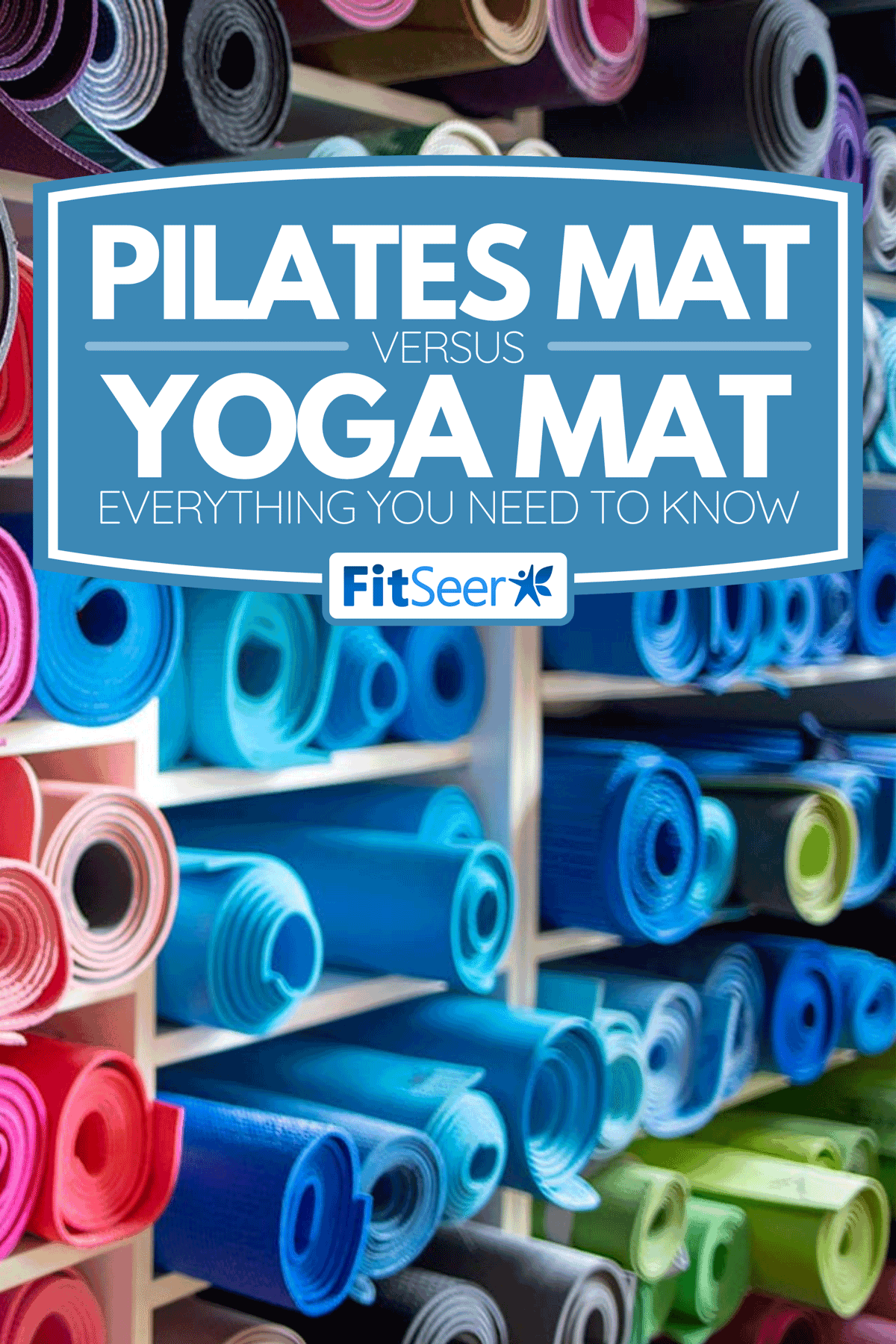
What Are the Differences Between a Pilates Mat and a Yoga Mat?
Thicker vs. Thinner
Pilates mats are thicker than yoga mats. The average Pilates mat is 3/8 to 1/2-inch thick while the average yoga mat is 1/8 to 1/4-inch thick. This difference in thickness provides the right support you need for the different types of exercises you perform in either Pilates or yoga.
In a typical Pilates class, you spend the majority of the time lying down. Whether on your back, stomach, or side, performing the various exercises on a thicker, more cushioned mat makes for a more comfortable experience. Exercises involving spinal rolls can quickly become painful on a thinner mat, and even a move as simple as a side leg lift can cause discomfort if your hip bone is digging into the ground.
You will achieve better results and be able to stick with your workout longer if your mat provides the right comfort and support.
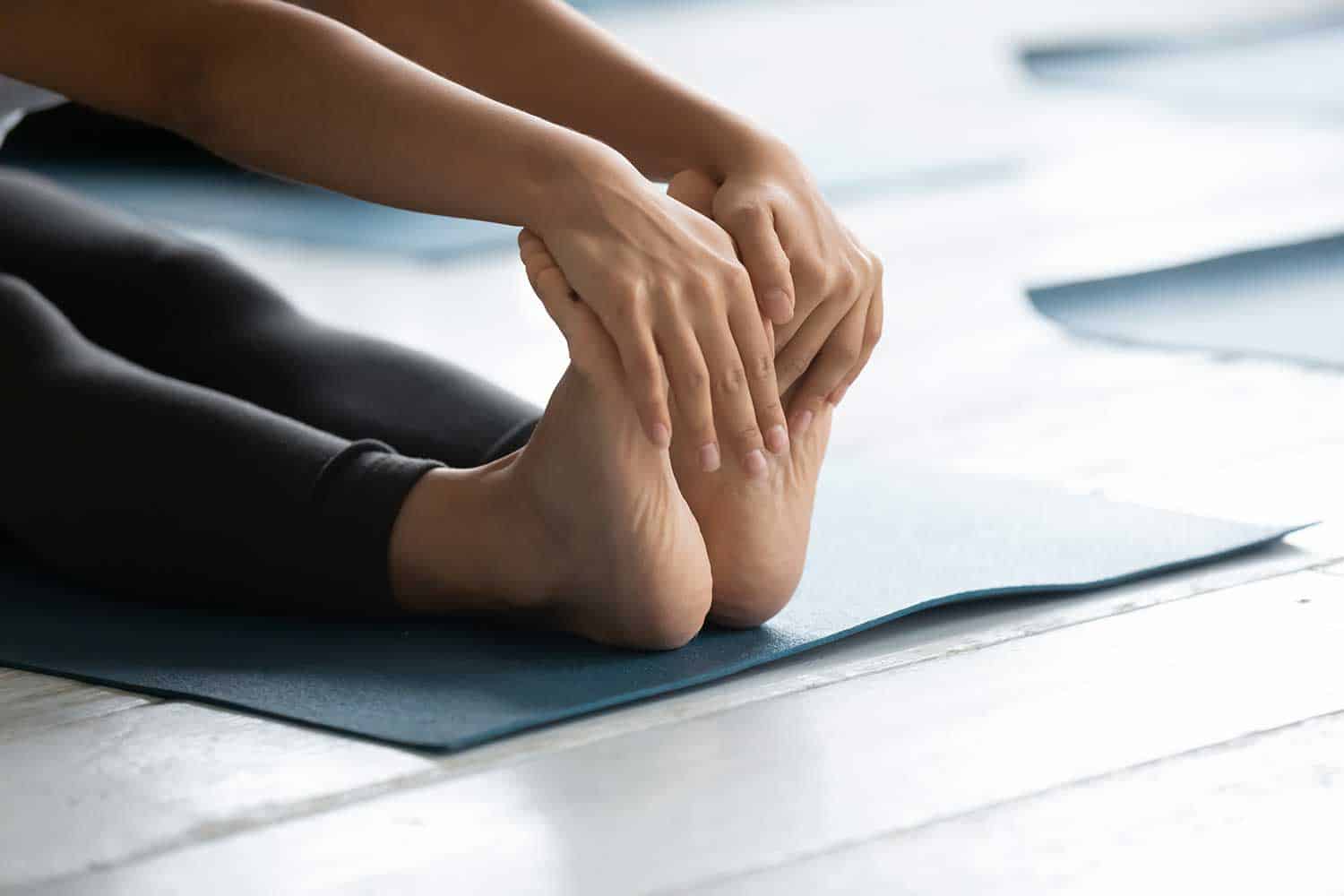
Click here for this Gaiam Essentials thick exercise mat on Amazon.
While a standard yoga class also involves several exercises performed lying down, it also contains a large number of standing poses. It's far more difficult to balance on a thicker mat vs. a thinner one. Whether you're performing a standing pose on two feet like Warrior II or a balancing pose on one foot like Tree, you need to be able to connect with and feel the ground.
A thinner mat provides a more stable base to stand on, which will make it easier for you to maintain proper form and receive maximum benefit from the yoga pose.
Smoother vs. Grippier
The texture is also usually different on Pilates mats vs. yoga mats. While both types of mats are made from similar materials, Pilates mats tend to have a smoother texture than yoga mats, which are usually grippier.
While performing Pilates, you spend most of the time lying down, but you often need to transition from one side to the other or from back to front. Sliding around and maneuvering between positions on a smoother surface is usually easier than on a super-grippy one.
Click here for this Stott Pilates deluxe mat on Amazon.
For yoga, a grippy surface on your mat is crucial. The stickier surface of a yoga mat not only helps keep your feet in place while performing standing poses but also helps keeps the mat from sliding around on the floor. If you try to perform yoga on a smooth Pilates mat, you will most likely find it slips around beneath your feet too much.
Aside from the better stability and balance you will receive standing on a grippier mat, the stickier surface can also help when performing yoga poses on the floor. The extra grippiness of a yoga mat can make it much easier to maintain your form when holding a difficult pose for several seconds than a slick mat would.
Size
A standard yoga mat is 68 inches long by 24 inches wide. Pilates mats are usually around this same size, though many are longer, up to 72 or 74 inches long, and some may be wider. Whether for Pilates or yoga, taller people may prefer a longer mat. And some people may prefer to use a wider mat for Pilates.
Click here for this extra-wide Pilates mat on Amazon.
Materials
Mats for both Pilates and yoga are made of either synthetic materials (PVC, TPE, or NBR) or natural materials (rubber, cork, cotton, hemp, or jute).
Click here for this Jade Yoga natural rubber mat on Amazon.
If you'd like an eco-friendly option, you'll want to opt for a mat made of natural or recycled materials.
Click here for this Yogasana cotton mat on Amazon.
How Do I Choose a Good Pilates Mat?
When selecting a Pilates mat, you will want to consider the thickness, size, texture, and materials as mentioned above. A 68-by-24-inch mat that is 1/2-inch thick will work for most people. If you are taller or have a larger body shape, you might want a mat that is longer, wider, or both. And some people may prefer more cushioning with a mat up to 1-inch thick.
If you'll primarily be performing Pilates at home, you can opt for a larger mat if your space allows. If you'll be taking your mat with you to the gym, you'll want one that rolls up and is easy to transport. Some mats include straps to make storing and carrying them easier.
Click here for this BalanceFrom GoCloud extra-thick mat on Amazon.
While almost always slicker than yoga mats, some Pilates mats contain a non-slip surface or extra ribbing to help prevent sliding on the floor. If you'll mostly be using your mat in your carpeted living room, this won't matter, but you might appreciate a little extra grip on a slick gym floor.
Whether you choose a synthetic or natural material for your mat will depend on your personal preference. The more affordable mats tend to be made from synthetic PVC foam, but if you'd like a more non-toxic and eco-friendly option, you can choose a natural material like rubber or cork.
Click here for this Gurus cork mat on Amazon.
Even among similar materials and thicknesses, the texture and density can vary between brands. If at all possible, examine a variety of mats first to see which will best meet your needs. If you have friends that perform Pilates, ask if you can check out their mats. Or if you plan to attend classes at a gym or Pilates studio, check if they have any recommendations.
If you can't examine any mats in person, online reviews and questions from other customers are a great resource and should provide most of the information you need to determine whether a mat will fit your needs. We've included links to a variety of options in this article to help you get started.
What Is the Best Thickness for a Pilates Mat?
The ideal thickness for a Pilates mat is between 3/8 and a 1/2 inch.
Click here for this Hautest Health NBR mat on Amazon.
Why Are Pilates Mats Thicker Than Yoga Mats?
Pilates mats are thicker than yoga mats because the extra cushioning makes performing exercises lying on your back, stomach, or side more comfortable. Yoga requires a thinner mat for increased stability while performing standing and balancing poses.
How Long Should a Pilates Mat Be?
A standard Pilates mat is 68 to 72 inches long. You generally would not want to choose a mat much shorter than this as it might impair your ability to perform all the moves. Taller people may want to opt for a longer mat, though it generally will not matter too much if your feet extend a little beyond the edge of the mat while lying down.
Can I Use a Yoga Mat for Pilates?
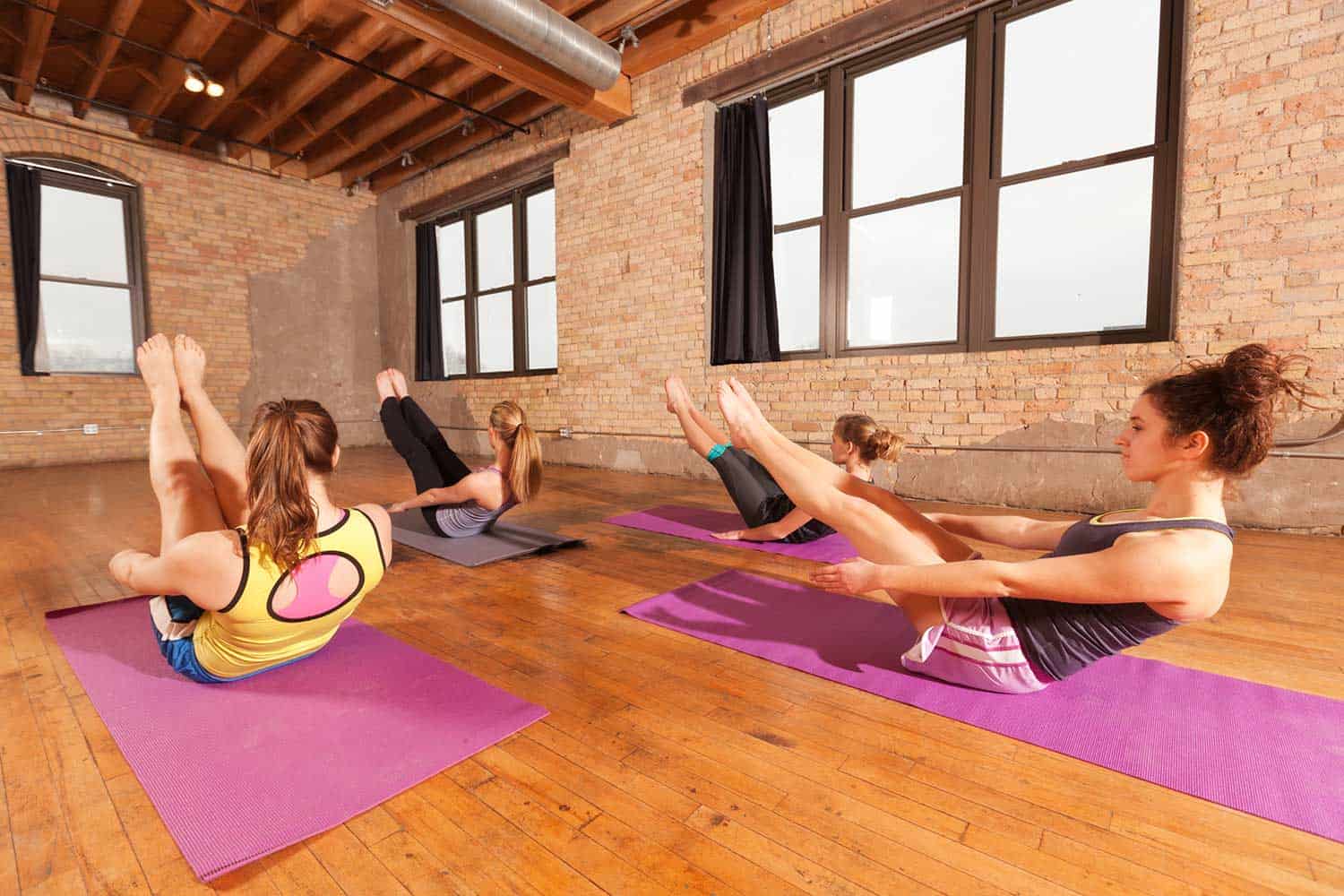
You can use a yoga mat for Pilates, though you might find some moves less comfortable with a thinner yoga mat than they would be with a thicker, more padded Pilates mat.
If you find performing certain moves uncomfortable with a thinner mat, you can fold the mat over to provide more cushion under a knee or hip bone (but this won't be possible with all exercises). You can also add a folded towel or blanket to provide some additional padding.
What Can I Use as an Exercise Mat?
If you don't have either a Pilates or yoga mat, if you're traveling, for instance, you may wonder what alternatives you can use instead. If you're performing your workout outside on either a lawn or a beach, a towel can be a good option. The softer ground of grass or sand will provide some cushion, while the towel will provide a smoother surface.
If you are indoors on a rug or carpeted surface, a towel or blanket can also substitute for a mat in a pinch, or you can opt to perform your workout directly on the carpet.
If you'll be performing a Pilates routine on a hard floor, you may want to layer several blankets to mimic the thickness of a Pilates mat. Thick woven blankets or heavy quilts are the best options if you have them. For any standing poses, you should move your substitute "mat" out of the way and perform them directly on the floor as your blankets might slip under your feet and cause you to fall.
Since most Pilates moves are performed lying down, you can also perform many of them on a bed if you don't have an exercise mat. The firmer the mattress, the better this will work. Make sure you remove any fluffy blankets or pillows to provide the flattest possible surface.
Summary
Hopefully, this information will help you choose the perfect mat for your Pilates or yoga workout. If you'd like more information on what you'll need to perform Pilates, check out these other articles:









![Read more about the article 12 Types Of Football Helmets [And Which One To Choose]](https://fitseer.com/wp-content/uploads/2021/09/An-unrecognizable-football-player-wearing-a-black-helmet-500x333.jpg)

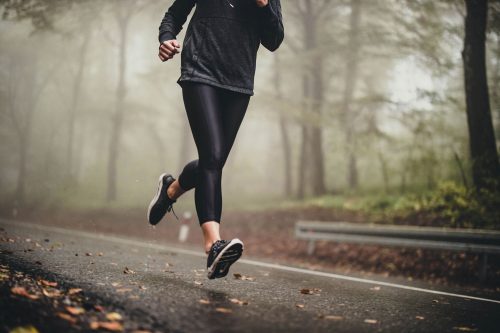
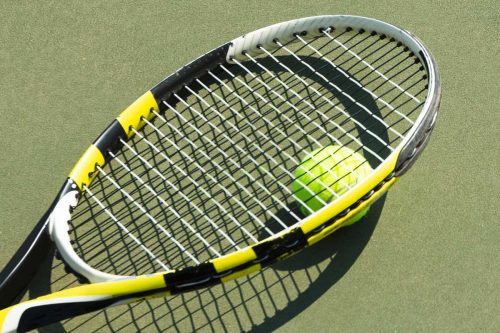
![Read more about the article How To Clean Mesh Running Shoes? [5 Steps]](https://fitseer.com/wp-content/uploads/2020/11/Pair-of-light-breathable-summer-shoes-on-natural-wooden-board-surface-500x333.jpg)
![Read more about the article What Do You Need for Backcountry Skiing? [Basic Gear List]](https://fitseer.com/wp-content/uploads/2020/09/A-well-geared-skier-hiking-on-a-snow-trail-500x333.jpg)